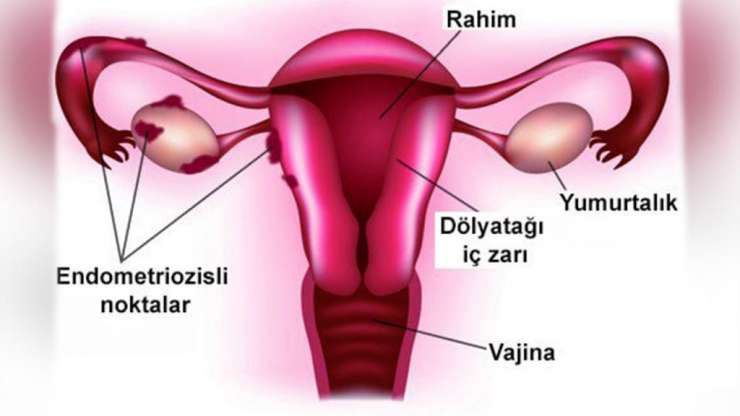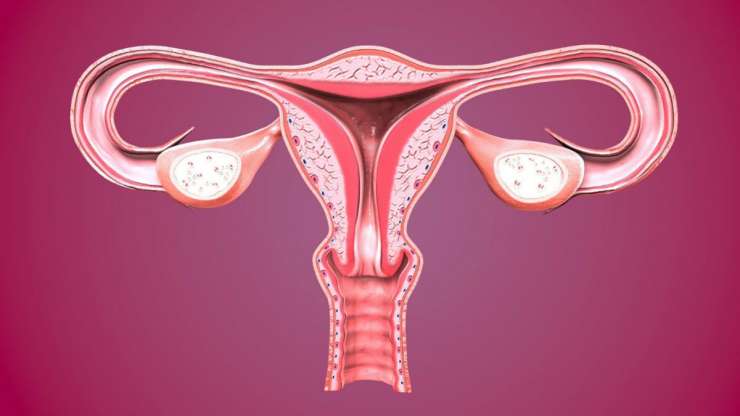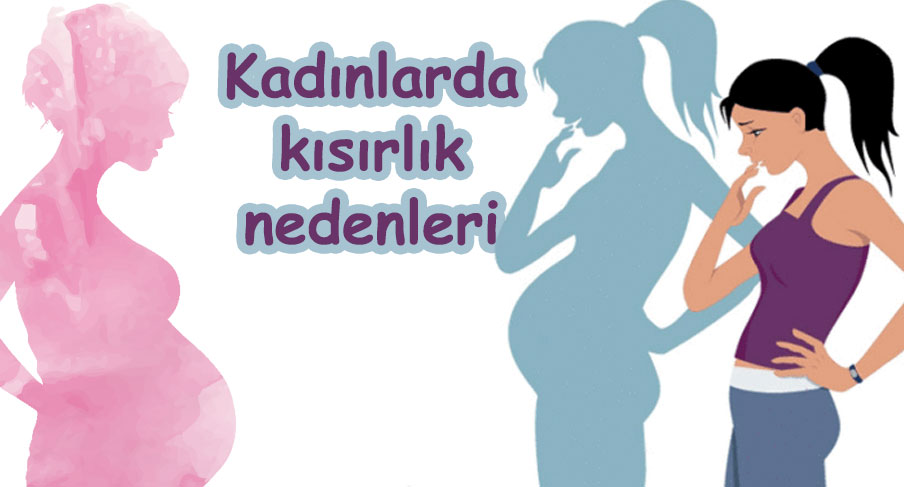Women’s Infertility Causes and Treatment
The most important reason for female infertility is that the woman who has to produce an egg every month does not or does not produce it correctly or does not always produce it. This is called ovulation disorders.
Causes of Infertility in Women
Undoubtedly, every woman wants to have a child by nature and taste the sense of motherhood. Today, however, 15 out of every 100 couples have to get help in order to achieve this desire.
Infertility is rare that cases are unsolved. However, it is not meaningful to resort to assistive methods if there is early menopause or if there is no sperm cell in the man. In other cases, it can be said that the chances of having children only decrease in infertility cases.
Examinations and examinations are performed step by step to make the diagnosis and may take a long time. This helps the doctor to understand the problem well and decide the most effective treatment. As a result of research, one or more causes of infertility can be found, or in about 15% of couples the cause of infertility cannot be determined.
The most important causes of infertility in women are ovulation disorders, endometriosis and damaged or blocked tubes.
Ovulation disorders:

The most common cause of infertility in women is ovulation disorders.
Women’s Infertility Causes and Treatment
We can examine ovulation disorders in 3 groups.
- It is called hypogonadthropic hypogonadism which is caused by insufficient hormones that are secreted from the brain and control the ovaries. In the treatment of hormones secreted from the brain should be replaced with injections. In these women, a brain MRI and prolactin measurements are required before treatment to rule out more important conditions, such as a tumor occupying the underlying brain.
- It is called hypergonadotropic hypogonadism and is due to early depletion of the eggs in the ovary. It is popularly known as early menopause. There is no known cure for having children. However, you can conceive with egg donation.
- Ovulation disorders due to disruption of the balance between the brain and ovary. Polycystic ovary syndrome is the most common cause in women. The exact cause is unknown. It is characterized by the environmental arrangement of the structures that we call preantral follicles that have started to develop in the ovaries but have not completed their development potential and the thickening of the layer called stroma secreting excess male hormone.

It is said that polycystic ovary syndrome may occur as a result of incorrect programming of hormones in the brain as a result of a number of factors starting from the period when the girl is in the womb, and it may trigger the disease in problems such as malnutrition and excess weight gain. However, the disease typically occurs in young girls and usually in adolescence.
Girls with polycystic ovary syndrome are usually obese, with hair growth and hair loss and acne. Treatment is for symptoms only.
Symptoms of the disease may not be treated. The most important and the first step in the treatment of the patient is to control the weight and weight loss. It should be kept in mind that losing weight alone can bring back ovulation.
If there is weight gain caused by a hormone disorder, diets should be programmed accordingly.
Since polycystic ovary syndrome is related to overweight gain, especially in women, it is important to investigate specifically and apply a number of treatments to this end.
We can divide weight gain and fat in women. The first of these is apple type weight gain in the abdominal circumference and upper body, while the legs and hips are thin.
The second type of weight gain type is called pear type hips and legs fatness, the body is thin. Although it is easier to hide the obesity of apple type when viewed cosmetically, it is worse in terms of health problems. This is because it is a male type of fat with high cholesterol rates.
Weight gain in women with polycystic ovary syndrome is apple type.
Another finding of polycystic ovary syndrome is the menstrual irregularity and the prevention of conception due to the rare or absent ovulation.
In women who are not yet married or do not want to have children, these can be arranged with birth control pills. However, women who want to have children, ovulation stimulating drugs should be used.
Polycystic ovary syndrome: In the typical form of this disease, the menses are generally irregular and infrequent (3 to 4 times per year). In some patients, menstruation is absent, while in others it may be completely normal. Patients are generally prone to obesity. Skin and hair lubrication, such as pimples are common problems. Ovaries are found in more than normal eggs and they secrete male hormone prevents normal egg development.
Damaged and clogged tubes:
Tubes are usually clogged due to infections. Almost all of these infections are caused by sexually transmitted germs. The most important of these microbes are gonorrhea and chlamydia.
Turkey is also another important factor tuberculosis (TB disease). After the tuberculosis germ is taken by the respiratory tract, it settles in the lungs and comes to the tubes via blood and destroys the tubes. In addition, previous surgical interventions (fibroids or cyst removal or endometriosis surgery) may result in obstruction of the tubes or the tube-ovarian relationship.
Tubes are also clogged when women with children choose to connect tubes as a family planning method. The obstruction of the tubes is usually understood by a uterine-tube film called HSG.
If it is understood that the tubes are clogged, it is best to perform a direct IVF in the region adjacent to the uterus.
Laparoscopy is required if the tubes are clogged at the ends close to the ovary (hydrosalpinx). In laparoscopy, tubes should be opened and removed if they cannot be opened. The presence of clogged tubes in the form of hydrosalpinks reduces the success of in vitro fertilization.
Endometriosis

The endometrial cells that lay inside the uterus settle outside the uterus and bring destruction to these areas. The reason is not entirely clear. The most popular theory is the retrograde menstruation theory. In women, menstrual bleeding occurs when the cells lining the inner layer of the uterus are shed. Some of these cells go back and pour from the tubes into the abdominal cavity. In general, these cells are destroyed by the body’s defensive mechanisms. However, in some women, these mechanisms do not work well and endometrial cells settle on the peritoneum and begin to reproduce.
Endometriosis most commonly involves the membranes and ovaries. In addition, it forms the endometriosis of rectovaginal septum by settling between the rectum, the last part of the uterus and large intestine. The disease usually has a progressive character and its prevalence can only be understood by laparoscopy. The symptoms are pain, mass and infertility.
Endometriosis cysts in the ovary are called endometriomas. When endometriomas are associated with infertility, they should be taken laparsocopically.
Following laparoscopic endometrioma, women can be expected to conceive within the first 6 months after the extent of endometriosis has been evaluated. For those who cannot conceive, another 6 months of waiting can be recommended depending on the age of the woman.
In cases where the age is over 35, ancillary reproductive techniques should be started without losing much time. In some cases, advanced anatomy may be impaired and the possibility of spontaneous pregnancy cannot be given. In cases where endometriosis is highly common and disrupts the tube and ovary relationship, it is best to make a test tube baby immediately.
Laparoscopy and cauterization or laser vaporization can be used for the treatment of endometriosis foci on the peritoneal endometriosis. Both techniques are not different in terms of results.
Rectovaginal septum endometriosis usually has a nodule located in this region. Painful menstruation, painful intercourse and painful outflow are the most common symptoms. The nodule should be removed by laparoscopy.
Endometriosis is a recurrent disease. In 20% of the cases, the disease may progress to the discomforting state within 5 years following the surgical procedure.
Problems of the cervix:

Structural, infectious or secretory (mucus) disorders in the cervix may be the cause of infertility. Mucus secreted from the cervix facilitates the genital transport of sperm. Under the influence of estrogen and progesterone hormones, the amount and quality of the mucus during the cycle changes. Benign tumors such as polyps or surgical procedures performed in this region may cause infertility.
Allergic causes:
Allergic causes can be the cause of infertility but diagnosis and treatment are difficult. The allergic cause can be found in the sperm or mucus. The therapeutic efficacy of these allergic conditions, called antisperm antibodies, is unclear and pregnancy rates in treated or untreated patients are not very different. Therefore, the necessity of the routine is controversial.
Other causes and treatment of infertility
In addition to the above-mentioned cases, there are also cases that are associated with infertility but cannot be precisely attributed to infertility. The most important of these are congenital abnormalities of the uterus and fibroids.




Add Your Comment